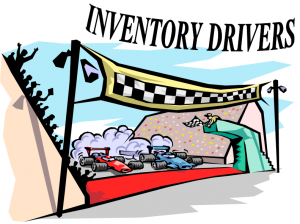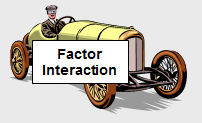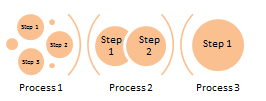 What is the one thing every non service company has in common? Inventory. Without it you basically do not have a business but there is always a love / hate relationship in any company with its inventory. Why do you have inventory in the first place? Because it is cheaper to have it than not have it. You need to have lots of inventory so you can respond faster to customer requests yet you can’t have more than absolutely necessary because the cost is too high.
What is the one thing every non service company has in common? Inventory. Without it you basically do not have a business but there is always a love / hate relationship in any company with its inventory. Why do you have inventory in the first place? Because it is cheaper to have it than not have it. You need to have lots of inventory so you can respond faster to customer requests yet you can’t have more than absolutely necessary because the cost is too high.
Now obviously that is a very broad brush I am using with that statement and I am not taking into account what type of inventory (Finished, raw, etc), what type of business model or industry you are in, or any number of other factors. Regardless of most of these factors there are many truths about inventory that cut across the various differences between companies. I call these truths “Inventory Drivers” and they are what determine how much and what type of inventory you have. There are many different drivers such as accuracy (inventory, forecast, production…), lead time, batch size, financial directives… Keep in mind that the relative importance and effect of each of these drivers changes with each organization, over time, with changes in the economy, with changes in the competitive environment and any of hundreds of other factors. This means that there will never be a list of 5 or 10 things to do that will guarantee perfect inventory control. There is as much art as science here and the interactions between these factors is probably the most important factor of all. When dealing with inventory control, as with so many other aspects of Supply Chain it is imperative that you be constantly monitoring the situation, understanding the current and potential future conditions, thinking about alternatives and proactively adjusting your inventory controls. Since successful and effective inventory control has a huge effect on any companies’ bottom line the better we understand these drivers and how to deal with them, the more successful the company will be. In essence, to effectively control inventory levels you must control the drivers, not the inventory itself. If this sounds like something from lean six sigma you are right. While lean six sigma does not actually express this reality directly it is definitely about control of the process interactions.
The next several discussions that I plan to post will be about these various drivers, what they mean and how best to deal with them, so sit back, relax and let’s start this series with a short discussion on FACTOR INTERACTION.
So what do I mean by factor interaction? Most of us prefer a world where one plus one equals two. Unfortunately that is rarely the case with inventory drivers. As a specific example, if your forecast is wrong (and it makes a difference whether it is wrong high or low) then your inventory will either build or shrink by a factor influenced by the inaccuracy. This is the one plus one world. Now if you add in another factor such as batch size (let’s say a very high batch size) and combine that with a forecast error on the high side (expected demand is higher than actual), what is likely to happen? In the worst case scenario you may end up ordering one or more batches of material than you really need which will cause your inventory to go up. Now add in long lead times which reduce your ability to correct in a reasonable time. Suddenly one plus one is adding up to substantially more than two.
Another way to think of this is to imagine a pond of water. What happens when you toss a stone into the pond? You get ripples in the surface. These ripples spread out across the surface and eventually damp themselves out. If the pond represents your inventory level and the stone an inventory driver the ripples are what happens to your inventory levels with time. Some ups and downs but relatively predictable and controllable. Now what happens if you toss two stones at the same time? You get two sets of ripples that interact as they cross each other. At these points the effects become even more pronounced than each of the original waves were (Look up “standard wave theory” if you want to understand this better). Now the situation is neither as predictable nor controllable as it was with just the one stone but still not disastrous. Finally, imagine throwing a double handful of gravel in the pond. There are so many interactions going on that there is no way to control it. Welcome to the typical day of an inventory controller.
Enjoy thinking and talking to your friends and co-workers about this, especially what it means for your organization. I would love to hear back on your and their thoughts on this topic. See you at the next posting.



